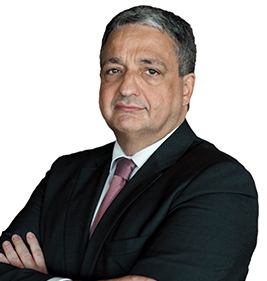Q: What challenges were involved in turning Caixa Geral de Depósitos [CGD] around and do you now consider the process complete?
A: In late 2016, the Portuguese government, CGD’s sole shareholder, informed the European Commission [EC] that the bank was unlikely to achieve the key performance indicators it had committed to under a 2013 restructuring plan. Contingent capital instruments due by 2017 were not likely to be paid, capital requirements were at risk, and cost-to-income ratios in breach. CGD had been posting negative results since 2011.
My board took office in February 2017. The government and CGD finalised negotiations with the EC, agreeing to a €4.9bn recapitalisation plan, the biggest ever in Portugal. The operation went ahead according to private investor standards – that is, it was not classified as state aid. The package was composed of a €2.5bn state capital injection that could not be made before the issuance of a €500m capital instrument. Despite a fragile capital position and uncertainty about the bank’s ability to meet financial targets, CGD managed to secure the confidence of private institutional investors for this milestone transaction.
The recapitalisation was part of a four-year strategic plan aimed at meeting ambitious targets for return on equity [ROE], cost-to-income, increased revenues and non-performing loan [NPL] reduction, among other objectives. The targets required CGD to define clear daily tasks and to accomplish its monthly objectives from the beginning. This required a sense of urgency that CGD had not seen before.
The targets needed to be promptly disseminated across the institution. Three days after taking office, I started visiting branches, stressing the need to refocus on our business strengths and our client-centred profile as Portugal’s biggest and most trusted bank. Two years after the start of the plan, we distributed dividends to our shareholder and aim to deliver an ROE of 7% again in 2019. We have increased our common equity Tier 1 (CET1) ratio by 2.9% since the recapitalisation and reduced our NPL ratio from 15.8% to 7.8%, with a target of 5% by the end of 2020.
The results achieved are thanks to the efforts of all our employees. Achieving all the ambitious targets set for the programme would show that the bank is on the right sustainable path to guarantee its leading role in the Portuguese financial sector.
Q: How do you view the evolution of the Portuguese banking sector in general, and CGD in particular, since the global financial and European debt crises?
A: The Portuguese financial system, and CGD in particular, has a solid liquidity position and in recent years has developed structural changes on the back of technology, innovation and data analysis, but also by increasing the efficiency of its cost structures.
The regulatory framework has required changes in corporate governance and control functions such as compliance and internal audit. The CGD board now includes international members who share and contribute best industry practices.
CGD has developed a new risk culture that is communicated across the institution. Today the risk management function is independent from the commercial network. At the same time, we have developed credit-scoring technology and we are continuously improving our predictive modelling tools.
Q: What do you see as the main opportunities for CGD – and the Portuguese financial sector as a whole – in 2019 and beyond? And the key risks?
A: The economic environment poses an important challenge for the Portuguese financial sector. As interest rates on loans fell from 4% to 1.5%, and capital requirements increased from 8% to 10.5%, profitability and ROE have come under significant pressure.
According to Deloitte, revenue from regulatory capital is about one-third of what it was. The past decade was marked by operational readjustment and clearing debt from balance sheets. Business sustainability for banks requires reducing risks and cutting operating costs. For CGD, reducing infrastructure costs is key to sustaining income revenue.
At the same time, customer needs are changing dramatically. They require immediate and tailor-made solutions. Customers want a house not a loan. A company needs a machine to expand production, not a leasing contract. Disintermediation should be seen as an opportunity for banks to connect financial services with their clients’ needs. CGD needs to be able to predict those needs by understanding its customers’ lifecycles or business undertakings. The way to achieve this is through data mining.
Q: What impact have the parliamentary inquiries into CGD’s past lending practices between 2000 and 2015 had on the bank?
A: CGD is working to deliver an ambitious strategic plan. While bad press from parliamentary inquires may affect net promoter score levels, the bank is focused on its client base and delivering a better service every day.












